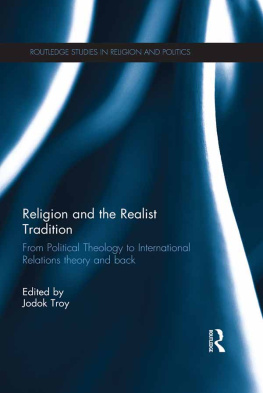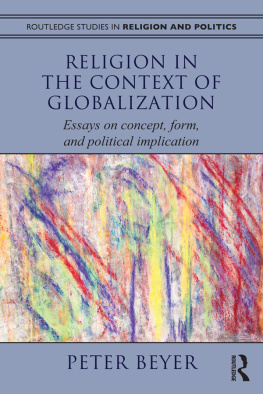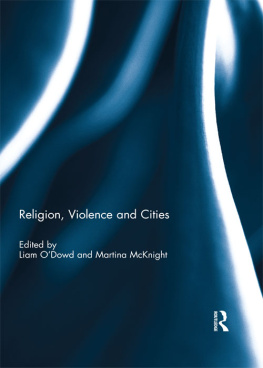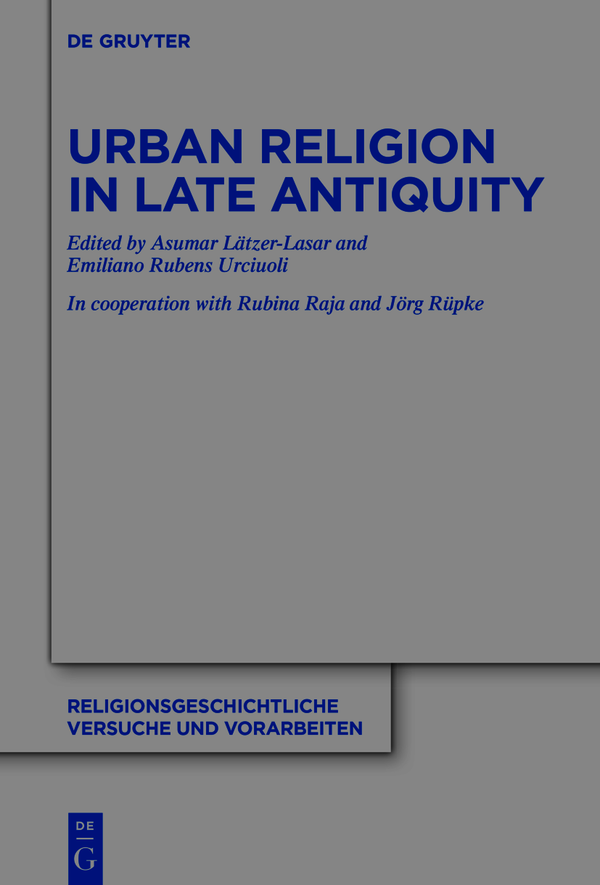Religionsgeschichtliche Versuche und Vorarbeiten
Edited by
Fritz Graf
Jrg Rpke
Christoph Uehlinger
Hans G. Kippenberg
Lawrence E. Sullivan
Volume
ISBN 9783110641172
e-ISBN (PDF) 9783110641813
e-ISBN (EPUB) 9783110641271
Bibliographic information published by the Deutsche Nationalbibliothek
The Deutsche Nationalbibliothek lists this publication in the Deutsche Nationalbibliografie; detailed bibliographic data are available on the Internet at http://dnb.dnb.de.
2021 Asuman Ltzer-Lasar, Emiliano Rubens Urciuoli, published by Walter de Gruyter GmbH, Berlin/Boston // The book is published with open access at www.degruyter.com.
This work is licensed under the Creative Commons Attribution-NonCommercial-NoDerivatives 4.0 International License.
Intersecting religion and urbanity in late antiquity
Asuman Ltzer-Lasar
Aarhus University , Max-Weber-Kolleg , 20, 4230, Moesgaard All , DK-8270 , Denmark
Rubina Raja
Aarhus University , Centre for Urban Network Evolutions (UrbNet) , 20, 4230 , Moesgaard All , DK-8270 , Hojebjerg , Denmark
Jrg Rpke
Aarhus University , Max-Weber-Kolleg , 20, 4230, , Moesgaard All , DK-8270 , Hojebjerg , Denmark
Emiliano Rubens Urciuoli
Aarhus University , Max-Weber-Kolleg , 20, 4230, , Moesgaard All , DK-8270 , Hojebjerg , Denmark
Urban Religion: readdressing historical change in late antiquity
The period of Late Antiquity is characterised by dramatic and even contradicting developments, especially for the urban networks in the Mediterranean and beyond. On the one hand many prosperous cities downsized their earlier territory. The development in the Western part of the (former) Imperium Romanum could outrightly be called a period of de-urbanisation, impacting on the density and strength of the urban networks as much as on the fabric of individual cities from the late third century CE onwards (), changed significantly and in correlation to local developments. This happened much in continuity in the East and far into the Islamic period and the second millennium CE, much contrary to the forms of political power and the loci of cultural production in the West.
Unsurprisingly, these developments had tremendous effects on the religious sphere. Religious actions, communications, and identities offer tools for carving out social spaces and making or at least modifying urban space. Neither is religion specifically urban nor the city specifically religious. But historically, in many periods and cultures, the shape and development (including growth as much as decline) of cities and, even more, the different urban spaces created by individuals and different social groups within such built environments and the shape and development of religious practices and ideas have significantly influenced each other (). Historical research has reconstructed such functions in many instances. In general, however, the analytical perspective was rather oriented from top-down processes when focussing on architecture or urban planning for instance.
The urban religion approach ().
Rarely and never comparatively has the interrelationship of city, religion and the global been thoroughly historicised and investigated with a view to other social differences of gender and age, social position and literacy, rural and trans-regional relationships. Therefore, in our new approach that is building on a cooperation with the The Danish National Research Foundations Centre of Excellence for Urban Network Evolutions (UrbNet), directed and represented by Rubina Raja, in the scope of the DFG-funded Humanities Centre for Advanced Studies Religion and Urbanity: Reciprocal formations we ask: how is religion used by different agents to appropriate (and that is to say, also craft) urban space? How do religious practices and imaginaries produce a transcending global that is different from other projections of the trans-urban? How does this specific religious agency shape and change urban space over time? And how does the urban context change different or even competing practices of religious communication and the ensuing forms of sacralisation? These are questions that need to be tackled. In a historical perspective these processes have hardly been investigated. At the heart of our approach is not a harmonizing view but a rather conflicting one of socially embedded agents who need to come to grips with their city, to endure and also to sustain, fight or transcend it. We do not suppose an easy evolutionary path but rather assume high variability in the relationship of developments in religious practices in cities, and the development of cities comprising agents using religious practices in different phases of the history of religion. Thus, we will go well beyond approaches that focus on competition of religious groups in claiming public space, or research that is interested above all in the role of religion for minorities (immigrants for example) joining the urban fabric as sketched above.
Within the wider framework of such a larger comparative approach, this volume zooms in on the historical context of the advanced imperial and late antique broader Mediterranean space (2nd8th centuries CE). Thus, it is not the periods of classical monumentalisation of cities like Athens, Antioch or Rome, which define our chronological framework. Instead we focus on cities such as Edessa, crisis management in Carthage or new foundations in Roman and Byzantine Syria, but also on the foundation and growth of Constantinople. We focus on periods of sustained change and ever new appropriation by ever different agents within clearly articulated and monumentalised built environments. Expertise and social trust are invoked within urban spaces that are consciously embedded in much larger political, military and imaginary frameworks.
It is individuals making urban space and the processes of groupings following on or directed against such built environments and social interaction as informed by them that take centre-stage. The chapters are looking for archaeological evidence not only of new structures, but of rebuilding, of creating coherent or dis-coherent urban spaces by patterns of movements or marking in religious terms. They are looking for textual evidence for such strategies, but also for imaginations of urban spaces, ritual practices, religious narratives or norms of re-interpreting and transcending them by relocating the urban in global horizons, whether formulated as universal norms or global geographies.
The case studies presented here from different angles question many of the (mostly implicit) hypotheses that are frequently entertained when thinking about religion in the city. First, we need to think about cities always in the plural. This is particularly important in two respects. The term city, in particular as used in European traditions and its exported terminologies, is a highly loaded and normative term (see ).
The highly different realities of cities do not live up to the singular of the normative concept. The cities reviewed in the following were old capitals or administrative centres, recently expanded villages or foundations due to military or dynastic reasons. Some were growing, others in decline or struggling to upkeep built environments. The sample reminds us that cities can and sometimes do fail. Many of the present metropolitan centres were insignificant a few centuries (if not shorter) before ancient capitals were moved and deserted in many instances. This is easily overlooked when a normative concept of cities as the better places for life is treated as a descriptive one. This normative discourse itself is part of urbanity, the specific way of living in cities and thinking about city or cities (). Many cities in many urban networks were competing, vying for the benevolence of an emperor or defending respectively struggling for regional priority, with regard to economic attraction or administration of water.







